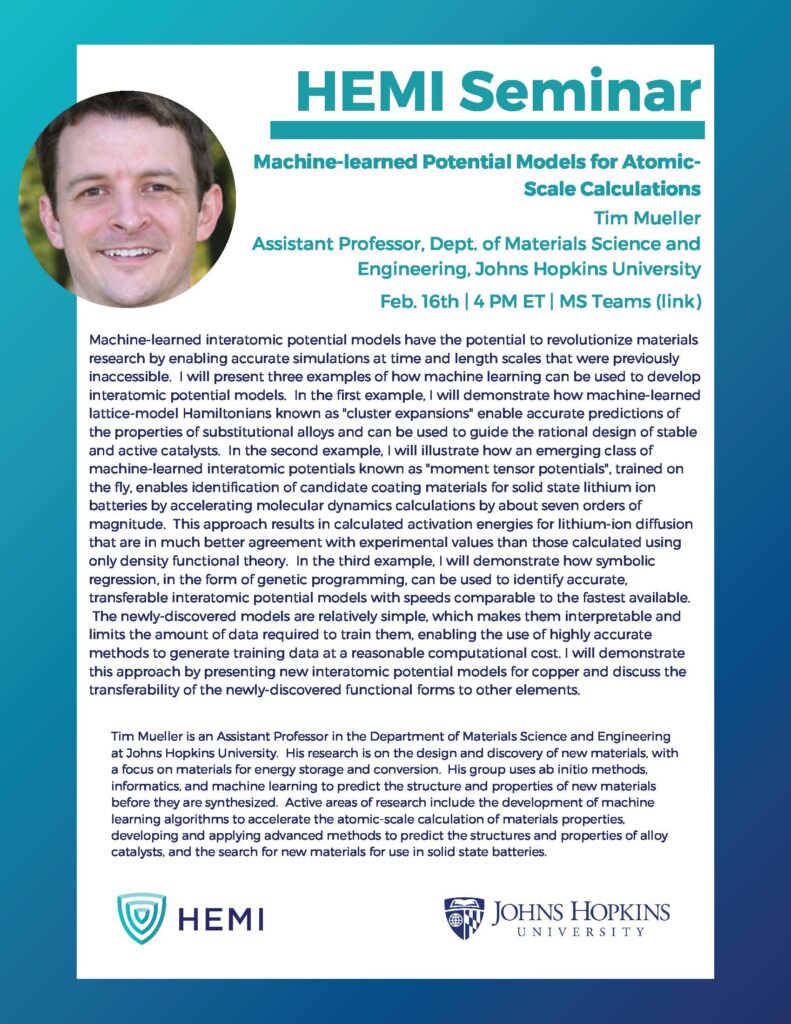February 16, 2021 @ 4:00 pm - 5:00 pm
Event Navigation
Machine-learned Potential Models for Atomic-scale Calculations
Machine-learned interatomic potential models have the potential to revolutionize materials research by enabling accurate simulations at time and length scales that were previously inaccessible. I will present three examples of how machine learning can be used to develop interatomic potential models. In the first example, I will demonstrate how machine-learned lattice-model Hamiltonians known as “cluster expansions” enable accurate predictions of the properties of substitutional alloys and can be used to guide the rational design of stable and active catalysts. In the second example, I will illustrate how an emerging class of machine-learned interatomic potentials known as “moment tensor potentials”, trained on the fly, enables identification of candidate coating materials for solid state lithium ion batteries by accelerating molecular dynamics calculations by about seven orders of magnitude. This approach results in calculated activation energies for lithium-ion diffusion that are in much better agreement with experimental values than those calculated using only density functional theory. In the third example, I will demonstrate how symbolic regression, in the form of genetic programming, can be used to identify accurate, transferable interatomic potential models with speeds comparable to the fastest available. The newly-discovered models are relatively simple, which makes them interpretable and limits the amount of data required to train them, enabling the use of highly accurate methods to generate training data at a reasonable computational cost. I will demonstrate this approach by presenting new interatomic potential models for copper and discuss the transferability of the newly-discovered functional forms to other elements.
Tim Mueller is an Assistant Professor in the Department of Materials Science and Engineering at Johns Hopkins University. His research is on the design and discovery of new materials, with a focus on materials for energy storage and conversion. His group uses ab initio methods, informatics, and machine learning to predict the structure and properties of new materials before they are synthesized. Active areas of research include the development of machine learning algorithms to accelerate the atomic-scale calculation of materials properties, developing and applying advanced methods to predict the structures and properties of alloy catalysts, and the search for new materials for use in solid state batteries.





